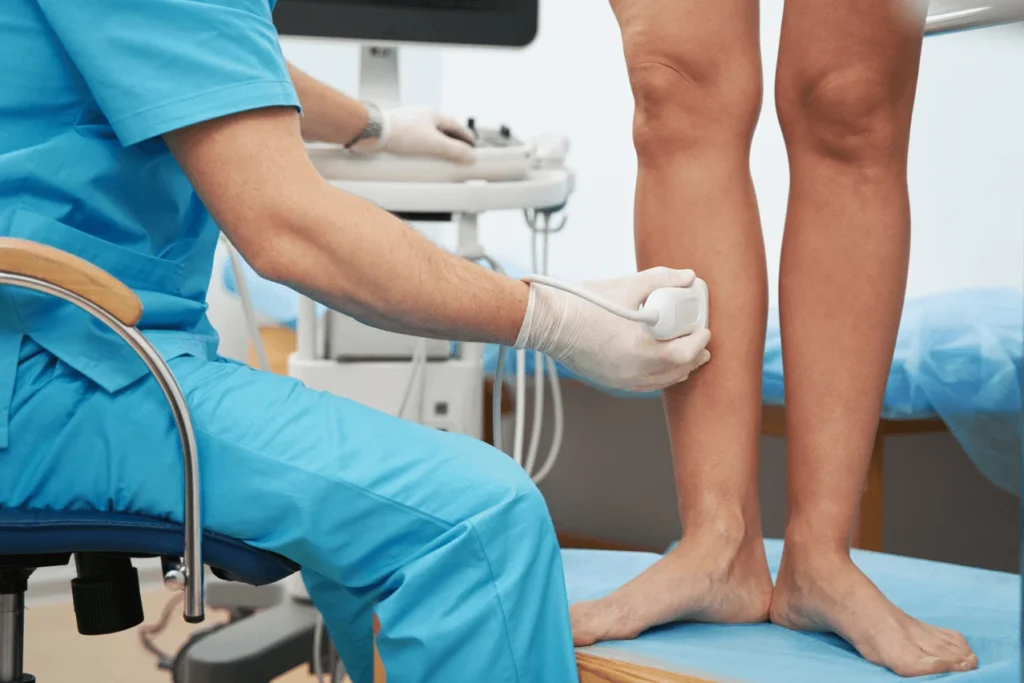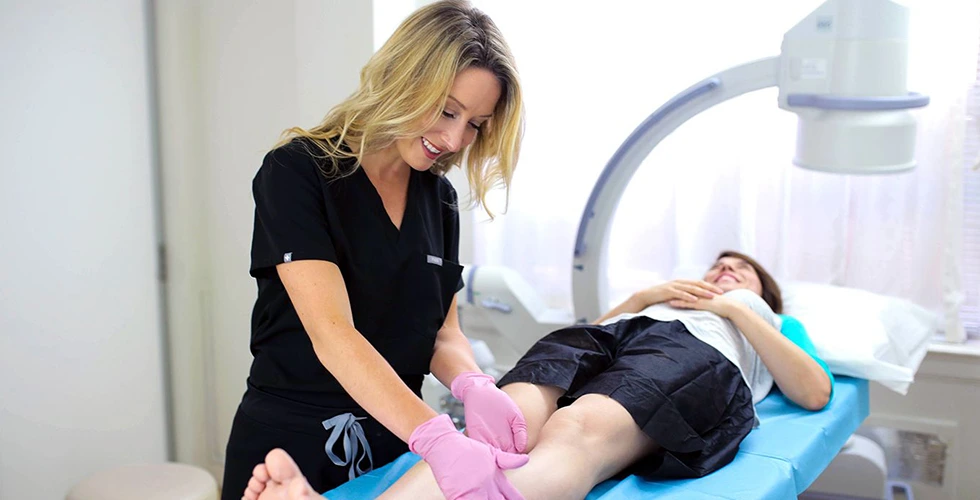If you’ve been experiencing discomfort in your legs, such as aching, swelling, or a burning sensation in your veins, it’s crucial to understand the potential underlying cause. One condition that could be responsible for these symptoms is chronic venous insufficiency (CVI). At Maryland Vein Clinic, our team of board-certified vein doctors specializes in the diagnosis and treatment of vein-related issues. In this article, we will delve into the stages of chronic venous insufficiency and provide you with the information you need to recognize and manage this condition.
What is Chronic Venous Insufficiency (CVI)?
Chronic venous insufficiency, often referred to as CVI, is a condition that affects the proper functioning of the veins in your legs. In a healthy vein, blood flows upward from the legs and back to the heart against gravity, thanks to the one-way valves present in the veins. These valves ensure that the blood doesn’t flow backward.
However, when these valves become damaged or weakened, they fail to close properly, leading to a condition known as venous reflux. As a result of venous reflux, blood accumulates in the legs and ankles, causing various symptoms. Over time, CVI can progress through several stages, each characterized by different signs and severity of symptoms.

Stage 1: Spider Veins and Telangiectasia
In the early stages of chronic venous insufficiency, you may notice the appearance of spider veins or telangiectasia. These are small, dilated blood vessels close to the skin’s surface that often appear as red, blue, or purple clusters. Spider veins are typically harmless but may cause aesthetic concerns for some individuals. At Maryland Vein Clinic, we offer minimally invasive treatments such as sclerotherapy to address spider veins and improve their appearance.
Stage 2: Varicose Veins
As CVI progresses, the increased pressure in the leg veins can lead to the development of varicose veins. Varicose veins are enlarged, twisted veins that are visible beneath the skin’s surface. They are often dark blue or purple in color and may cause discomfort, such as aching, throbbing, or itching. At our clinic, we provide a range of treatments for varicose veins, including endovenous laser ablation, radiofrequency ablation, and VenaSeal.
Stage 3: Edema and Swelling
In the third stage of CVI, the accumulation of blood and increased pressure in the leg veins can result in swelling, known as edema. Edema typically affects the lower legs, ankles, and feet and may cause pain, heaviness, and a sensation of tightness. If left untreated, edema can lead to skin changes and ulcer formation. At Maryland Vein Clinic, we offer comprehensive diagnosis and personalized treatment plans to manage edema and alleviate your symptoms.
Stage 4: Skin Changes and Ulcers
The most advanced stage of chronic venous insufficiency is characterized by significant skin changes and the development of venous ulcers. Due to the high pressure and poor circulation, the skin may become discolored, dry, and itchy. Prolonged swelling and reduced oxygen supply can also result in the breakdown of the skin, leading to the formation of painful ulcers. At this stage, specialized treatment options may be recommended to address the underlying cause of the ulcers and promote healing.
Managing Chronic Venous Insufficiency
If you suspect you may have chronic venous insufficiency, it is essential to seek professional medical advice for an accurate diagnosis. At Maryland Vein Clinic, we employ state-of-the-art vascular imaging and duplex ultrasound to evaluate your venous system and identify the root cause of your symptoms. Our board-certified vein doctors will then curate a personalized treatment plan to address your specific condition and needs.
Remember, early intervention is key to preventing the progression of CVI and managing your symptoms effectively. If you’re experiencing any discomfort or notice changes in your leg veins, contact Maryland Vein Clinic for a comprehensive evaluation. We also offer free insurance verification, ensuring a seamless experience right from your first appointment.
Prevention and Lifestyle Tips for CVI
While proper medical treatment is crucial for managing chronic venous insufficiency (CVI), there are also steps you can take to prevent its progression and alleviate symptoms. Here are some lifestyle tips and preventive measures you can incorporate into your daily routine:
- Regular Exercise: Engage in regular physical activity to promote healthy blood circulation in your legs. Walking, swimming, cycling, and low-impact exercises are particularly beneficial. Avoid prolonged periods of sitting or standing.
- Maintain a Healthy Weight: Excess weight puts additional pressure on your veins, exacerbating CVI symptoms. Maintain a healthy weight through a balanced diet and regular exercise to reduce the strain on your veins.
- Elevate Your Legs: Elevating your legs above heart level for short periods throughout the day can help improve blood flow and reduce swelling. For example, you can prop your legs up on a stack of pillows while lying down or use an adjustable footrest while sitting.
- Wear Compression Stockings: Compression stockings provide external support to your veins and help improve blood flow. They can help reduce swelling, relieve discomfort, and prevent the progression of CVI. Consult with your vein doctor to determine the appropriate compression level and type of stockings for your specific needs.
- Avoid Tight Clothing: Tight clothing, especially around the waist, groin, and legs, can restrict blood flow and contribute to venous congestion. Opt for loose-fitting and comfortable clothing to promote healthy circulation.
- Practice Leg Exercises: Incorporate simple leg exercises into your daily routine to keep the muscles in your legs active and promote blood flow. Ankle rotations, calf raises, and leg lifts are some examples of exercises that can help.
By implementing these preventive measures and making positive lifestyle choices, you can support the management of chronic venous insufficiency and enhance your overall vascular health. Remember to consult with your vein doctor at Maryland Vein Clinic for personalized advice and guidance tailored to your specific condition and needs.
Schedule Your Appointment in Maryland
Chronic venous insufficiency can significantly impact your quality of life if left untreated. By understanding the stages of CVI and seeking timely medical intervention, you can effectively manage your symptoms and prevent further complications. At Maryland Vein Clinic, our dedicated team of board-certified vein doctors is committed to providing minimally invasive treatments and personalized care to help you achieve healthy, pain-free legs. Contact us at our conveniently located clinic just outside of Washington, DC in Silver Spring, Maryland, and take the first step toward healthier veins and improved well-being.




